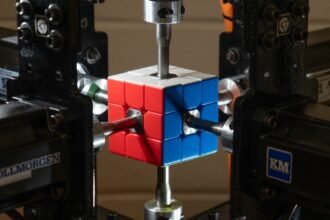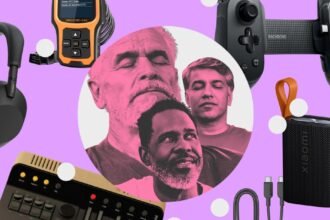If you aim to maximize the benefits of a world increasingly dominated by AI tools, consider adopting this habit: take numerous screenshots. Capture images of anything and everything. While there’s much debate about voice modes, omnipresent cameras, and the multimodal future, pressing the buttons to save what you’re looking at might prove to be the most valuable digital behavior.
Screenshots serve as the most universal way to capture digital information. They allow you to snap almost anything—though not everything, due to some restrictions like those from Netflix—with just a few clicks, enabling you to save and share with virtually any device, app, or person. As Johnny Bree, the founder of the digital storage app Fabric, mentions, screenshots act as a portable data format, unmatched in their ability to move across various software.
A single screenshot carries a wealth of information, including its source, contents, and even a timestamp displayed on the corner of the screen. Most importantly, it communicates a vital and complex signal, essentially saying, “I care about this.” While numerous AI tools aim to monitor the world and distill meaningful insights, they fall short in assessing relevance. A screenshot assigns value and instructs the system to pay attention.
Screenshots empower users by putting them in control. “If I give you access to all my emails, WhatsApp messages, everything, there’s an overflow of information,” says Mattias Deserti, head of smartphone marketing at Nothing. Rather than indiscriminately saving every webpage or email—and dealing with privacy issues—users can select what they wish to share by taking screenshots, thereby training the system themselves.
Until now, screenshots have been quite rudimentary. You take one, and it usually ends up hidden in your camera roll, forgotten until you scroll through endlessly to find it again. The first step towards enhancing their usefulness is identifying what they contain. Optical character recognition (OCR) technology has long been adept at detecting text, but AI models take it further. You can search for specific content or queries like “movies” to locate all related images.
There’s more to a screenshot than just its text. Advanced AI models can recognize platforms by colors, identify websites from logos, or discern different content types like song names from Spotify or reviews on Yelp. With this data, a screenshot app might automatically organize images for you.
For now, what we’ve discussed essentially results in a sophisticated way of viewing screenshots, which might not intrigue many as it could become another neglected app. However, the potential grows when your device or app can actively use these screenshots to aid memory or facilitate tasks. For instance, Nothing’s new Essential Space app and Pixel Screenshots help by generating reminders based on saved content or prompting related actions in other apps.
Mike Choi, an indie developer, created the app Camp to enhance the functionality of screenshots. By converting each screenshot into a “card” that stores relevant information, he seeks to allow AI to dynamically generate UI based on the screenshot category.
While agentic AI is quickly evolving across the tech industry, capturing and organizing useful screenshot data is becoming a critical aspect of building effective AI assistants. The seamless input system that screenshots provide remains a robust method for placing markers on essential information. Despite the multimodal future involving various sensors, screenshots might just be the most straightforward way to leverage AI, one image at a time.









